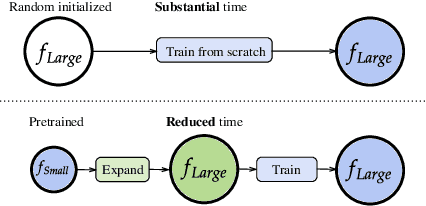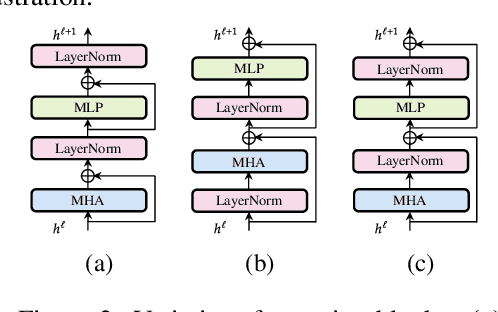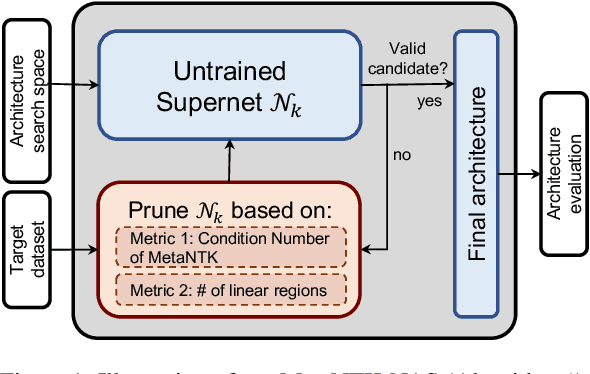Yite Wang
LEMON: Lossless model expansion
Oct 12, 2023



Abstract:Scaling of deep neural networks, especially Transformers, is pivotal for their surging performance and has further led to the emergence of sophisticated reasoning capabilities in foundation models. Such scaling generally requires training large models from scratch with random initialization, failing to leverage the knowledge acquired by their smaller counterparts, which are already resource-intensive to obtain. To tackle this inefficiency, we present $\textbf{L}$ossl$\textbf{E}$ss $\textbf{MO}$del Expansio$\textbf{N}$ (LEMON), a recipe to initialize scaled models using the weights of their smaller but pre-trained counterparts. This is followed by model training with an optimized learning rate scheduler tailored explicitly for the scaled models, substantially reducing the training time compared to training from scratch. Notably, LEMON is versatile, ensuring compatibility with various network structures, including models like Vision Transformers and BERT. Our empirical results demonstrate that LEMON reduces computational costs by 56.7% for Vision Transformers and 33.2% for BERT when compared to training from scratch.
NTK-SAP: Improving neural network pruning by aligning training dynamics
Apr 06, 2023



Abstract:Pruning neural networks before training has received increasing interest due to its potential to reduce training time and memory. One popular method is to prune the connections based on a certain metric, but it is not entirely clear what metric is the best choice. Recent advances in neural tangent kernel (NTK) theory suggest that the training dynamics of large enough neural networks is closely related to the spectrum of the NTK. Motivated by this finding, we propose to prune the connections that have the least influence on the spectrum of the NTK. This method can help maintain the NTK spectrum, which may help align the training dynamics to that of its dense counterpart. However, one possible issue is that the fixed-weight-NTK corresponding to a given initial point can be very different from the NTK corresponding to later iterates during the training phase. We further propose to sample multiple realizations of random weights to estimate the NTK spectrum. Note that our approach is weight-agnostic, which is different from most existing methods that are weight-dependent. In addition, we use random inputs to compute the fixed-weight-NTK, making our method data-agnostic as well. We name our foresight pruning algorithm Neural Tangent Kernel Spectrum-Aware Pruning (NTK-SAP). Empirically, our method achieves better performance than all baselines on multiple datasets.
Double Dynamic Sparse Training for GANs
Feb 28, 2023



Abstract:The past decade has witnessed a drastic increase in modern deep neural networks (DNNs) size, especially for generative adversarial networks (GANs). Since GANs usually suffer from high computational complexity, researchers have shown an increased interest in applying pruning methods to reduce the training and inference costs of GANs. Among different pruning methods invented for supervised learning, dynamic sparse training (DST) has gained increasing attention recently as it enjoys excellent training efficiency with comparable performance to post-hoc pruning. Hence, applying DST on GANs, where we train a sparse GAN with a fixed parameter count throughout training, seems to be a good candidate for reducing GAN training costs. However, a few challenges, including the degrading training instability, emerge due to the adversarial nature of GANs. Hence, we introduce a quantity called balance ratio (BR) to quantify the balance of the generator and the discriminator. We conduct a series of experiments to show the importance of BR in understanding sparse GAN training. Building upon single dynamic sparse training (SDST), where only the generator is adjusted during training, we propose double dynamic sparse training (DDST) to control the BR during GAN training. Empirically, DDST automatically determines the density of the discriminator and greatly boosts the performance of sparse GANs on multiple datasets.
Global Convergence of MAML and Theory-Inspired Neural Architecture Search for Few-Shot Learning
Mar 17, 2022



Abstract:Model-agnostic meta-learning (MAML) and its variants have become popular approaches for few-shot learning. However, due to the non-convexity of deep neural nets (DNNs) and the bi-level formulation of MAML, the theoretical properties of MAML with DNNs remain largely unknown. In this paper, we first prove that MAML with over-parameterized DNNs is guaranteed to converge to global optima at a linear rate. Our convergence analysis indicates that MAML with over-parameterized DNNs is equivalent to kernel regression with a novel class of kernels, which we name as Meta Neural Tangent Kernels (MetaNTK). Then, we propose MetaNTK-NAS, a new training-free neural architecture search (NAS) method for few-shot learning that uses MetaNTK to rank and select architectures. Empirically, we compare our MetaNTK-NAS with previous NAS methods on two popular few-shot learning benchmarks, miniImageNet, and tieredImageNet. We show that the performance of MetaNTK-NAS is comparable or better than the state-of-the-art NAS method designed for few-shot learning while enjoying more than 100x speedup. We believe the efficiency of MetaNTK-NAS makes itself more practical for many real-world tasks.
 Add to Chrome
Add to Chrome Add to Firefox
Add to Firefox Add to Edge
Add to Edge